MaryAnn Bernal's Blog, page 227
October 20, 2014
Prehistoric Temple Uncovered in Ukraine
by Owen Jarus
A temple dating back about 6,000 years has been discovered within a massive prehistoric settlement in Ukraine. Inside the temple, archaeologists found humanlike figurines, sacrificed animal remains and potter fragments. Here's a look at the prehistoric finding. [Read full story on the prehistoric temple discovery]
Prehistoric temple

[image error]The temple measures 60 by 20 meters (197 by 66 feet) and was made of wood and clay. Originally two stories tall it was surrounded by a galleried courtyard. The temple and settlement were burned down after they were abandoned. (Photo Credit: courtesy Nataliya Burdo and Mykhailo Videiko/Institute of Archaeology NAS of Ukraine, Kyiv.)
Clay altars

[image error]Inside the temple archaeologists found the remains of eight clay platforms that likely served as altars. One of them is pictured here. "Numerous burnt bones of lamb, associated with sacrifice" were found in one of these platforms in the temple's upper floor, write Nataliya Burdo and Mykhailo Videiko, of the Institute of Archaeology of the National Academy of Sciences of Ukraine. (Photo Credit: courtesy Nataliya Burdo and Mykhailo Videiko/Institute of Archaeology NAS of Ukraine, Kyiv.)
Sacrificial remains

[image error]This platform contains burnt animal bones, possibly the remains of a sacrifice. (Photo Credit: courtesy Nataliya Burdo and Mykhailo Videiko/Institute of Archaeology NAS of Ukraine, Kyiv.)
Pottery fragments

[image error]The upper floor of the Ukraine temple was divided into five rooms. One of these rooms, on the south side of the temple, contained a large pot and several smaller vessels. A picture of it is seen here. (Photo Credit: courtesy Nataliya Burdo and Mykhailo Videiko/Institute of Archaeology NAS of Ukraine, Kyiv.)
Human figurines

[image error]While excavating the temple, which was first detected in 2009 and only recently surveyed, archaeologists found a number of figurine fragments, some of them in a humanlike shape. (Photo Credit: courtesy Nataliya Burdo and Mykhailo Videiko/Institute of Archaeology NAS of Ukraine, Kyiv.)
Wonky eyes

[image error]These figurine fragments have eyes that are dissimilar, one being larger than the other. They also have noses that look a bit like a beak. Similar figurines, also dating back around 6,000 years, have been discovered at other sites in Ukraine, referred to as belonging to the Trypillia culture. (Photo Credit: courtesy Nataliya Burdo and Mykhailo Videiko/Institute of Archaeology NAS of Ukraine, Kyiv.)
Hair decoration

[image error]These tiny gold pendants, less than an inch in size, were also discovered at the temple, which would have sprawled some 238 hectares (588 acres), according to recent geomagnetic surveys. The pendants may have been worn on someone's hair. (Photo Credit: courtesy Nataliya Burdo and Mykhailo Videiko/Institute of Archaeology NAS of Ukraine, Kyiv.)
Game tokens

[image error]Archaeologists also found a variety of clay tokens inside the temple. Artifacts like these were used for counting and game playing in the ancient world. (Photo Credit: courtesy Nataliya Burdo and Mykhailo Videiko/Institute of Archaeology NAS of Ukraine, Kyiv.)
Follow us @livescience , Facebook & Google+ .
Live Science
<img height="1" width="1" alt="" style="display:none;" src="http://maryannbernal.blogspot.com//ww..." />

A temple dating back about 6,000 years has been discovered within a massive prehistoric settlement in Ukraine. Inside the temple, archaeologists found humanlike figurines, sacrificed animal remains and potter fragments. Here's a look at the prehistoric finding. [Read full story on the prehistoric temple discovery]
Prehistoric temple

[image error]The temple measures 60 by 20 meters (197 by 66 feet) and was made of wood and clay. Originally two stories tall it was surrounded by a galleried courtyard. The temple and settlement were burned down after they were abandoned. (Photo Credit: courtesy Nataliya Burdo and Mykhailo Videiko/Institute of Archaeology NAS of Ukraine, Kyiv.)
Clay altars

[image error]Inside the temple archaeologists found the remains of eight clay platforms that likely served as altars. One of them is pictured here. "Numerous burnt bones of lamb, associated with sacrifice" were found in one of these platforms in the temple's upper floor, write Nataliya Burdo and Mykhailo Videiko, of the Institute of Archaeology of the National Academy of Sciences of Ukraine. (Photo Credit: courtesy Nataliya Burdo and Mykhailo Videiko/Institute of Archaeology NAS of Ukraine, Kyiv.)
Sacrificial remains

[image error]This platform contains burnt animal bones, possibly the remains of a sacrifice. (Photo Credit: courtesy Nataliya Burdo and Mykhailo Videiko/Institute of Archaeology NAS of Ukraine, Kyiv.)
Pottery fragments

[image error]The upper floor of the Ukraine temple was divided into five rooms. One of these rooms, on the south side of the temple, contained a large pot and several smaller vessels. A picture of it is seen here. (Photo Credit: courtesy Nataliya Burdo and Mykhailo Videiko/Institute of Archaeology NAS of Ukraine, Kyiv.)
Human figurines

[image error]While excavating the temple, which was first detected in 2009 and only recently surveyed, archaeologists found a number of figurine fragments, some of them in a humanlike shape. (Photo Credit: courtesy Nataliya Burdo and Mykhailo Videiko/Institute of Archaeology NAS of Ukraine, Kyiv.)
Wonky eyes

[image error]These figurine fragments have eyes that are dissimilar, one being larger than the other. They also have noses that look a bit like a beak. Similar figurines, also dating back around 6,000 years, have been discovered at other sites in Ukraine, referred to as belonging to the Trypillia culture. (Photo Credit: courtesy Nataliya Burdo and Mykhailo Videiko/Institute of Archaeology NAS of Ukraine, Kyiv.)
Hair decoration

[image error]These tiny gold pendants, less than an inch in size, were also discovered at the temple, which would have sprawled some 238 hectares (588 acres), according to recent geomagnetic surveys. The pendants may have been worn on someone's hair. (Photo Credit: courtesy Nataliya Burdo and Mykhailo Videiko/Institute of Archaeology NAS of Ukraine, Kyiv.)
Game tokens

[image error]Archaeologists also found a variety of clay tokens inside the temple. Artifacts like these were used for counting and game playing in the ancient world. (Photo Credit: courtesy Nataliya Burdo and Mykhailo Videiko/Institute of Archaeology NAS of Ukraine, Kyiv.)
Follow us @livescience , Facebook & Google+ .
Live Science
<img height="1" width="1" alt="" style="display:none;" src="http://maryannbernal.blogspot.com//ww..." />


Published on October 20, 2014 16:40
History Trivia - The Greeks defeated the Persians at Salamis
October 20

480 BC The Greeks defeated the Persians in a naval battle at Salamis, an island in the Saronic Gulf near Athens. It marked the high-point of the second Persian invasion of Greece which had begun in 480 BC.

1097 First Crusaders arrived in Antioch. The first siege, by the crusaders against the Muslim city, lasted from October 21, 1097, to June 2, 1098.

1524 Thomas Linacre, physician and classical scholar, who founded the Royal College of Physicians in London died.
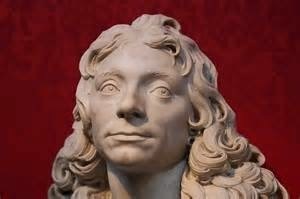
1632 Christopher Wren, astronomer/great architect (St. Paul's Cathedral), was born.


480 BC The Greeks defeated the Persians in a naval battle at Salamis, an island in the Saronic Gulf near Athens. It marked the high-point of the second Persian invasion of Greece which had begun in 480 BC.

1097 First Crusaders arrived in Antioch. The first siege, by the crusaders against the Muslim city, lasted from October 21, 1097, to June 2, 1098.

1524 Thomas Linacre, physician and classical scholar, who founded the Royal College of Physicians in London died.

1632 Christopher Wren, astronomer/great architect (St. Paul's Cathedral), was born.

Published on October 20, 2014 03:48
October 19, 2014
Mr. Chuckles is taking on politics with author E.J. Greenway around The Wizard's Cauldron
 The Wizard speaks:
The Wizard speaks:There aren't many political thrillers in Indie and so when I met Emma Gray on my Twitterbus, I was keen to find out what was going on.
I subsequently found out that Emma actually works at the Palace of Westminster and her novels are drawn from real life.
This was too exciting an opportunity to pass up and when Emma released her follow up, "Power Games" I got on the Wizphone and asked her to answer a few questions for me.
Emma's Question Time, as it were.
Though incredibly busy, she was happy to oblige and I caught up with her in one of the many cloisters that line the corridors of power in the Origin of Democracy.
Here's what she has to say

Published on October 19, 2014 12:53
History Trivia - Romans under Scipio Africanus defeats Hannibal's army in the Battle of Sama
October 19

202 BC, the Romans under Scipio Africanus defeated Hannibal's army of Carthaginians and Numidians in the Battle of Sama in the Second Punic War.

439 Gaiseric, King of the Vandals, seized the Roman city of Carthage, and made it his capital.

1216 King John of England died at Newark-on-Trent and was succeeded by his nine-year-old son Henry.

1453 The French recapture of Bordeaux brought the Hundred Years' War to a close, with the English retaining only Calais on French soil.

1469 Ferdinand of Aragon married Isabella of Castile creating the alliance that unified Spain.

202 BC, the Romans under Scipio Africanus defeated Hannibal's army of Carthaginians and Numidians in the Battle of Sama in the Second Punic War.

439 Gaiseric, King of the Vandals, seized the Roman city of Carthage, and made it his capital.

1216 King John of England died at Newark-on-Trent and was succeeded by his nine-year-old son Henry.

1453 The French recapture of Bordeaux brought the Hundred Years' War to a close, with the English retaining only Calais on French soil.

1469 Ferdinand of Aragon married Isabella of Castile creating the alliance that unified Spain.

Published on October 19, 2014 05:54
October 18, 2014
History Trivia - Charlemagne and his brother Carloman crowned co-rulers of the Franks
October 18,
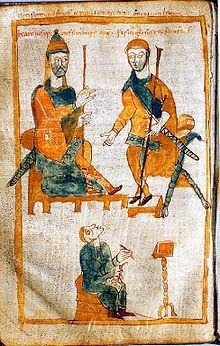
768 Charlemagne and his brother Carloman were crowned co-rulers of the Franks, after the death of their father, Pepin the Short.
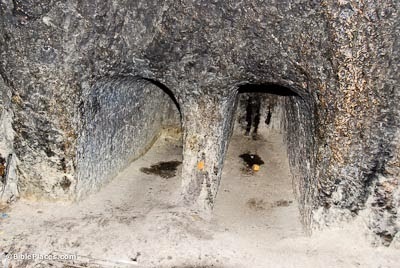
1009 The Church of the Holy Sepulcher, a Christian church in Jerusalem, was completely destroyed by the Fatimid caliph Al-Hakim bi-Amr Allah, who hacked the Church's foundations down to bedrock.

1016 Canute of Denmark became the heir of Edmund Ironside, King of England, with victory at Ashingdon, and Edmund agreed to divide England between himself and Canute. At the end of November, however, Edmund died, and Canute became king of all England.

1529 Henry VIII ordered Cardinal Wolsey to hand over the great seal.


768 Charlemagne and his brother Carloman were crowned co-rulers of the Franks, after the death of their father, Pepin the Short.

1009 The Church of the Holy Sepulcher, a Christian church in Jerusalem, was completely destroyed by the Fatimid caliph Al-Hakim bi-Amr Allah, who hacked the Church's foundations down to bedrock.

1016 Canute of Denmark became the heir of Edmund Ironside, King of England, with victory at Ashingdon, and Edmund agreed to divide England between himself and Canute. At the end of November, however, Edmund died, and Canute became king of all England.

1529 Henry VIII ordered Cardinal Wolsey to hand over the great seal.

Published on October 18, 2014 05:21
October 17, 2014
Giant Sphinx from 'Ten Commandments' Film Unearthed 91 Years Later
By Laura Geggel
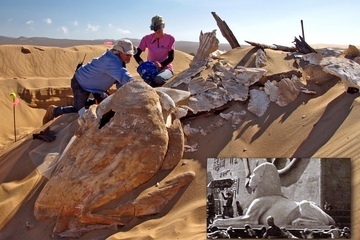 Archaeologists unearth one of the giant sphinxes from the film, "The Ten Commandments."
Archaeologists unearth one of the giant sphinxes from the film, "The Ten Commandments."
Credit: Applied EarthWorks,
Hidden for more than 90 years beneath the rolling sand dunes of Guadalupe, California, an enormous, plaster sphinx from the 1923 blockbuster movie "The Ten Commandments" has been rediscovered and is now above ground.
The public will be able to see the sphinx on display as early as next year, once it has been reconstructed — a necessity since it became weather-beaten during its stint beneath the sand, said Doug Jenzen, the executive director of the Guadalupe-Nipomo Dunes Center, who oversaw the recent excavation.
The roughly 15-foot-tall (4.6 meters) sphinx is one of 21 that lined the path to Pharaoh's City in the 1923 silent hit, directed by Cecil B. DeMille. He later remade the film, with Charlton Heston as Moses, in 1956. [See Photos of the Film's Giant Spinxes & Excavation]
"[The 1923 film] was one of the largest movie sets ever made, because they didn't have special effects," Jenzen told Live Science. "So anything that they wanted to look large, they had to build large." The facade to Pharaoh's City stood an estimated 12 stories tall and about 720 feet (219 meters) across. "It's giant," Jenzen said.
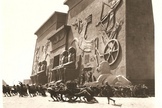
[image error] Applied EarthWorks archaeologists uncovered one of the 21 giant sphinxes (shown in its original state) from the 1923 movie "The Ten Commandments."
Credit: Dunes Center, Guadalupe, CA.
View full size imageThe film crew originally built the sphinxes' body parts in Los Angeles, and transported them about 165 miles (266 kilometers) to Guadalupe, where they assembled them into giant, hollow statues. The crew even built an extra sphinx so that the actors playing slaves could drag it around during filming, Jenzen said.
Legend has it that after filming ended, the movie crew dynamited the set and buried the sphinxes in a trench, but Jenzen has found little evidence of such a dramatic end. Instead, the wind, rain and sand likely collapsed and buried a large part of the set under the ever-shifting dunes. The sphinxes are in roughly the same place they were during filming, he said.
In fact, the film helped guide an excavation of the site in 2012.
"We'd work during the day, and we'd watch the movie at night to figure out what we were finding," said M. Colleen Hamilton, a historical archaeology program manager and senior historical archaeologist with Applied EarthWorks in California.
The first excavation took place in the 1990s, when the Dunes Center, then a part of the Nature Conservancy, had archaeologists comb through the abandoned movie site. They found dozens of small artifacts, including tobacco tins and cough syrup bottles — likely holding a substitute for alcohol during the Prohibition Era, which lasted from 1920 to 1933, Jenzen said.
"What objects like that tell us is that there wasn't a whole lot to do at the making of this movie," he said. "These guys had a lot of really good times before takes."
Mysterious sphinx
In 2012, the Dunes Center invited an archaeology group to survey the set again. This time, the archaeologists found the head of a sphinx about "the size of a pool table" buried in the dunes, Jenzen said.
The archaeologists excavated the fragile plaster of Paris head, now on display at the Dunes Center, but they didn't have time to exhume its body. Now, two years later, Applied EarthWorks returnedwith the goal of finishing the project.
But it wasn't to be, said Hamilton. Although the archaeologists had buried the body in sand in 2012 to protect it, the wind had uncovered the sphinx's remains, leaving a greying, crumbling mess.
"The site is basically being destroyed through erosion," Hamilton said. "It's become more critical to try to salvage some materials before they disappear." [Sand Scenes: California's Shifting Dunes]
The wind, however, helped them find the body of another sphinx. Sand had filled its hollow insides, and exposure to the moist beach air had dulled its red and ochre colors, making a careful excavation paramount.
From Oct. 6 to 14, the archaeology team, headed by Applied EarthWorks archaeologist Kholood Abdo Hintzman, slowly excavated the sphinx's body. To keep the paper-thin plaster of Paris from cracking, they wrapped it in cheesecloth soaked in a preservation chemical. Then, they carefully funneled sand out of the hollow statue, replacing the empty space with expanding insulation foam, Hamilton said.
The team could only work a few hours each day. In the morning, the thick, moist fog prevented them from doing their fragile work, and strong winds in the afternoon also stymied their progress. But, after eight days, they finally removed the body and placed it in an off-site building to dry and shrink to its normal size.
Fans of old Hollywood will be able to see the reconstructed body of the sphinx at the Dunes Center in mid- to late 2015, along with the head of the other reconstructed sphinx, Jenzen said. The movie itself is a piece of history, as it was the most expensive film made at that time, costing upward of $1 million, he said. Some scenes were filmed in Technicolor, and the crew used Jell-O as a special effect during the Biblical parting of the Red Sea.
"I think it's a great piece of Americana," Jenzen said. "But you have to hunker down to watch the whole thing, because it's more than three hours long and it's silent."
Live Science

 Archaeologists unearth one of the giant sphinxes from the film, "The Ten Commandments."
Archaeologists unearth one of the giant sphinxes from the film, "The Ten Commandments."Credit: Applied EarthWorks,
Hidden for more than 90 years beneath the rolling sand dunes of Guadalupe, California, an enormous, plaster sphinx from the 1923 blockbuster movie "The Ten Commandments" has been rediscovered and is now above ground.
The public will be able to see the sphinx on display as early as next year, once it has been reconstructed — a necessity since it became weather-beaten during its stint beneath the sand, said Doug Jenzen, the executive director of the Guadalupe-Nipomo Dunes Center, who oversaw the recent excavation.
The roughly 15-foot-tall (4.6 meters) sphinx is one of 21 that lined the path to Pharaoh's City in the 1923 silent hit, directed by Cecil B. DeMille. He later remade the film, with Charlton Heston as Moses, in 1956. [See Photos of the Film's Giant Spinxes & Excavation]
"[The 1923 film] was one of the largest movie sets ever made, because they didn't have special effects," Jenzen told Live Science. "So anything that they wanted to look large, they had to build large." The facade to Pharaoh's City stood an estimated 12 stories tall and about 720 feet (219 meters) across. "It's giant," Jenzen said.

[image error] Applied EarthWorks archaeologists uncovered one of the 21 giant sphinxes (shown in its original state) from the 1923 movie "The Ten Commandments."
Credit: Dunes Center, Guadalupe, CA.
View full size imageThe film crew originally built the sphinxes' body parts in Los Angeles, and transported them about 165 miles (266 kilometers) to Guadalupe, where they assembled them into giant, hollow statues. The crew even built an extra sphinx so that the actors playing slaves could drag it around during filming, Jenzen said.
Legend has it that after filming ended, the movie crew dynamited the set and buried the sphinxes in a trench, but Jenzen has found little evidence of such a dramatic end. Instead, the wind, rain and sand likely collapsed and buried a large part of the set under the ever-shifting dunes. The sphinxes are in roughly the same place they were during filming, he said.
In fact, the film helped guide an excavation of the site in 2012.
"We'd work during the day, and we'd watch the movie at night to figure out what we were finding," said M. Colleen Hamilton, a historical archaeology program manager and senior historical archaeologist with Applied EarthWorks in California.
The first excavation took place in the 1990s, when the Dunes Center, then a part of the Nature Conservancy, had archaeologists comb through the abandoned movie site. They found dozens of small artifacts, including tobacco tins and cough syrup bottles — likely holding a substitute for alcohol during the Prohibition Era, which lasted from 1920 to 1933, Jenzen said.
"What objects like that tell us is that there wasn't a whole lot to do at the making of this movie," he said. "These guys had a lot of really good times before takes."
Mysterious sphinx
In 2012, the Dunes Center invited an archaeology group to survey the set again. This time, the archaeologists found the head of a sphinx about "the size of a pool table" buried in the dunes, Jenzen said.
The archaeologists excavated the fragile plaster of Paris head, now on display at the Dunes Center, but they didn't have time to exhume its body. Now, two years later, Applied EarthWorks returnedwith the goal of finishing the project.
But it wasn't to be, said Hamilton. Although the archaeologists had buried the body in sand in 2012 to protect it, the wind had uncovered the sphinx's remains, leaving a greying, crumbling mess.
"The site is basically being destroyed through erosion," Hamilton said. "It's become more critical to try to salvage some materials before they disappear." [Sand Scenes: California's Shifting Dunes]
The wind, however, helped them find the body of another sphinx. Sand had filled its hollow insides, and exposure to the moist beach air had dulled its red and ochre colors, making a careful excavation paramount.
From Oct. 6 to 14, the archaeology team, headed by Applied EarthWorks archaeologist Kholood Abdo Hintzman, slowly excavated the sphinx's body. To keep the paper-thin plaster of Paris from cracking, they wrapped it in cheesecloth soaked in a preservation chemical. Then, they carefully funneled sand out of the hollow statue, replacing the empty space with expanding insulation foam, Hamilton said.
The team could only work a few hours each day. In the morning, the thick, moist fog prevented them from doing their fragile work, and strong winds in the afternoon also stymied their progress. But, after eight days, they finally removed the body and placed it in an off-site building to dry and shrink to its normal size.
Fans of old Hollywood will be able to see the reconstructed body of the sphinx at the Dunes Center in mid- to late 2015, along with the head of the other reconstructed sphinx, Jenzen said. The movie itself is a piece of history, as it was the most expensive film made at that time, costing upward of $1 million, he said. Some scenes were filmed in Technicolor, and the crew used Jell-O as a special effect during the Biblical parting of the Red Sea.
"I think it's a great piece of Americana," Jenzen said. "But you have to hunker down to watch the whole thing, because it's more than three hours long and it's silent."
Live Science

Published on October 17, 2014 14:55
History Trivia - Battle at Tours: Charles Martel victorious
October 17

539 BC King Cyrus The Great of Persia marched into the city of Babylon, releasing the Jews from almost 70 years of exile and making the first Human Rights Declaration.

733 Battle at Tours: Charles Martel (grandfather of Charlemagne) defeated Abd al-Rachmans Omajjaden, and halted a northward Islamic expansion into western Europe.
 1091 A tornado struck the heart of London which destroyed the rebuilt Norman London Bridge.
1091 A tornado struck the heart of London which destroyed the rebuilt Norman London Bridge.

1346 Battle of Neville's Cross: King David II of Scotland was captured by Edward III of England near Durham, and imprisoned in the Tower of London for eleven years.

1404 Innocent VII became Pope. During his pontificate, Innocent summoned a council in an attempt to heal the Western Schism but it never assembled.

1529 Henry VIII of England stripped Thomas Wolsey of his office for failing to secure an annulment of his marriage.


539 BC King Cyrus The Great of Persia marched into the city of Babylon, releasing the Jews from almost 70 years of exile and making the first Human Rights Declaration.

733 Battle at Tours: Charles Martel (grandfather of Charlemagne) defeated Abd al-Rachmans Omajjaden, and halted a northward Islamic expansion into western Europe.
 1091 A tornado struck the heart of London which destroyed the rebuilt Norman London Bridge.
1091 A tornado struck the heart of London which destroyed the rebuilt Norman London Bridge. 
1346 Battle of Neville's Cross: King David II of Scotland was captured by Edward III of England near Durham, and imprisoned in the Tower of London for eleven years.

1404 Innocent VII became Pope. During his pontificate, Innocent summoned a council in an attempt to heal the Western Schism but it never assembled.

1529 Henry VIII of England stripped Thomas Wolsey of his office for failing to secure an annulment of his marriage.

Published on October 17, 2014 05:49
October 16, 2014
'Bulgarian Indiana Jones' discovers 'vampire grave'
By Brian Mastroianni
 skeleton pierced with a piece of iron is seen on display during a media event at the National History Museum in Sofia June 14, 2012. This is one of two 700-year-old skeletons discovered with iron rods pierced through their chests. Archaeologists, excavating a monastery near the Black Sea city of Sozopol, discovered the skeletons. (REUTERS/Stoyan Nenov)
skeleton pierced with a piece of iron is seen on display during a media event at the National History Museum in Sofia June 14, 2012. This is one of two 700-year-old skeletons discovered with iron rods pierced through their chests. Archaeologists, excavating a monastery near the Black Sea city of Sozopol, discovered the skeletons. (REUTERS/Stoyan Nenov)
Just in time for Halloween, the man known as “Bulgaria’s Indiana Jones” may have unearthed the grave of one of the undead. On Oct. 9, archaeologist Nikolai Ovcharov announced that he discovered what he called a “vampire grave” that contains a skeleton with a ploughshare – an iron rod used for a plough – driven through its chest, the Telegraph reports. The grave dates back to the 13th century and was discovered at Perperikon, an ancient Thracian city in southern Bulgaria.
Ovcharov’s discovery reveals a gruesome burial ritual that sheds light on superstitions surrounding vampire lore. The skeleton is of a man thought to be in his 40s, and in addition to the metal rod hammered through his chest his left leg was removed and placed beside his body, according to Smithsonian.com.
“We have no doubts that once again we’re seeing an anti-vampire ritual being carried out, Ovcharov told the Telegraph. “Often they were applied to people who had died in unusual circumstances – such as suicide.”
Ovcharov said that, in these rituals, a rod or stake would be rammed through the body in order to prevent an evil individual returning from the grave.
Perperikon isn’t just a site known for things that go bump in the night. Discovered just 20 years ago, the ancient city is thought to be the location of the Temple of Dionysius, the Greek god of wine, fertility, and agriculture. There are a series of vampire graves at the site as well as other unusual findings, according to the Telegraph.
Ovcharov also uncovered the remains of a woman and a young child that were arranged to imitate standard depictions of Christianity’s Virgin Mary and child. Similar to the iron rod being used to protect against alleged vampirism, these bodies were arranged to recreate the recognizable Biblical image as a method to protect against the plague, which was running rampant through the medieval world when the graves were made.
Ovcharov’s discovery is similar to a grave found in the Bulgarian town of Sozopol in 2012. Back then, archeologist Dimitar Nedev, head of the Sozopol Archeological Museum found two skeletons impaled with similar metal rods, according to Archeology.
Just how widespread was a fear of the likes of Dracula terrorizing medieval Bulgarians? Nedev explained that the graves reveal local religious leaders’ emphasis to return to older “pagan” methods for protecting against disease and the supernatural. Nedev said that a Christian religious sect known as Manichean Bogomilism played a very prominent role in Bulgarian religious life in the 13th century.
“The Christian rituals practiced then – and now— still included many pagan elements,” Nedev told Archeology. Rituals, like driving a stake through the hearts of alleged vampires, were “particularly well preserved” at Sozopol and other nearby communities, he added.
Fox News

 skeleton pierced with a piece of iron is seen on display during a media event at the National History Museum in Sofia June 14, 2012. This is one of two 700-year-old skeletons discovered with iron rods pierced through their chests. Archaeologists, excavating a monastery near the Black Sea city of Sozopol, discovered the skeletons. (REUTERS/Stoyan Nenov)
skeleton pierced with a piece of iron is seen on display during a media event at the National History Museum in Sofia June 14, 2012. This is one of two 700-year-old skeletons discovered with iron rods pierced through their chests. Archaeologists, excavating a monastery near the Black Sea city of Sozopol, discovered the skeletons. (REUTERS/Stoyan Nenov)Just in time for Halloween, the man known as “Bulgaria’s Indiana Jones” may have unearthed the grave of one of the undead. On Oct. 9, archaeologist Nikolai Ovcharov announced that he discovered what he called a “vampire grave” that contains a skeleton with a ploughshare – an iron rod used for a plough – driven through its chest, the Telegraph reports. The grave dates back to the 13th century and was discovered at Perperikon, an ancient Thracian city in southern Bulgaria.
Ovcharov’s discovery reveals a gruesome burial ritual that sheds light on superstitions surrounding vampire lore. The skeleton is of a man thought to be in his 40s, and in addition to the metal rod hammered through his chest his left leg was removed and placed beside his body, according to Smithsonian.com.
“We have no doubts that once again we’re seeing an anti-vampire ritual being carried out, Ovcharov told the Telegraph. “Often they were applied to people who had died in unusual circumstances – such as suicide.”
Ovcharov said that, in these rituals, a rod or stake would be rammed through the body in order to prevent an evil individual returning from the grave.
Perperikon isn’t just a site known for things that go bump in the night. Discovered just 20 years ago, the ancient city is thought to be the location of the Temple of Dionysius, the Greek god of wine, fertility, and agriculture. There are a series of vampire graves at the site as well as other unusual findings, according to the Telegraph.
Ovcharov also uncovered the remains of a woman and a young child that were arranged to imitate standard depictions of Christianity’s Virgin Mary and child. Similar to the iron rod being used to protect against alleged vampirism, these bodies were arranged to recreate the recognizable Biblical image as a method to protect against the plague, which was running rampant through the medieval world when the graves were made.
Ovcharov’s discovery is similar to a grave found in the Bulgarian town of Sozopol in 2012. Back then, archeologist Dimitar Nedev, head of the Sozopol Archeological Museum found two skeletons impaled with similar metal rods, according to Archeology.
Just how widespread was a fear of the likes of Dracula terrorizing medieval Bulgarians? Nedev explained that the graves reveal local religious leaders’ emphasis to return to older “pagan” methods for protecting against disease and the supernatural. Nedev said that a Christian religious sect known as Manichean Bogomilism played a very prominent role in Bulgarian religious life in the 13th century.
“The Christian rituals practiced then – and now— still included many pagan elements,” Nedev told Archeology. Rituals, like driving a stake through the hearts of alleged vampires, were “particularly well preserved” at Sozopol and other nearby communities, he added.
Fox News

Published on October 16, 2014 14:55
Queen of the Underworld's Abduction Revealed in Ancient Greek Mosaic
By Megan Gannon
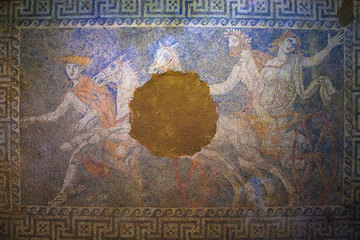
 The abduction of Persephone became a popular trope in Western Art. Here, the scene decorates a newly revealed mosaic in Amphipolis, Greece.
The abduction of Persephone became a popular trope in Western Art. Here, the scene decorates a newly revealed mosaic in Amphipolis, Greece.
Credit: Greek Ministry of CultureA newly revealed mosaic on the floor of a vast Greek tomb shows Hades hauling his reluctant bride Persephone to the underworld, archaeologists announced today (Oct. 16).
When the artwork was first uncovered a few days ago, excavators could only see part of the scene. The mosaic seemed to show Hermes, the Greek messenger God and son of Zeus, in a broad-brimmed hat, leading a horsedrawn chariot, with a bearded man in tow. But when more dirt was removed, a third figure came into view: a woman stretching her arm out in distress. Archaeologists with the Greek Ministry of Culture say it's now clear the mosaic depicts a famous scene from Greek mythology: the abduction of Persephone, sometimes called the rape of Persephone.
The mosaic, which is made up of brightly colored pebbles, lies in an antechamber in the huge Kasta Hill burial mound at Amphipolis, an ancient city about 65 miles (104 kilometers) east of Thessaloniki. The ongoing excavation at the site has been watched with great excitement in Greece. [See Photos of the Tomb's Excavation and Mosaic]
Greek archaeologist Katerina Peristeri, who is leading the project, has said the tomb dates back to the fourth century B.C., during the era of the Macedonian leader Alexander the Great. Though Peristeri has been tight-lipped about who she thinks might be buried inside, she told reporters today that, without a doubt, the person must have been "extremely important," according to the Greek Ministry of Culture.
In Greek mythology, Persephone, the daughter of Zeus and the harvest goddess Demeter, was carried off to the underworld by Hades to reign as his queen. (She eventually worked out a deal to split her time between her mother on Earth and her husband in the underworld; the story was used to explain the changing seasons.) The abduction is often depicted in Greek art with Persephone being taken away on Hades' chariot, sometimes accompanied by the messenger god Hermes.

[image error]
 Persephone's abduction is a familiar scene in Greek art. This Southern Italian vase, now in the British Museum, shows Hades carrying off Persephone in a four-horse chariot followed by Hermes.
Persephone's abduction is a familiar scene in Greek art. This Southern Italian vase, now in the British Museum, shows Hades carrying off Persephone in a four-horse chariot followed by Hermes.
Credit: © The Trustees of the British Museum
View full size imageThe mosaic at Amphipolis might have a companion. A mural in another royal Macedonian tomb from the fourth century B.C. also shows the abduction of Persephone. That wall painting, in Vergina, was discovered in the 1970s in a tomb that is believed to be the resting place of Philip II, Alexander the Great's father. (However, archaeologists have argued for decades about whom the cremated remains really belong to.)
This is the first time a pebble mosaic has been found in a funerary monument, according to the Greek Ministry of Culture. During the excavations at Kasta Hill, archaeologists have also uncovered a pair of headless sphinxes, two caryatids (columns that take the form of female statues) and traces of paint — but so far, no bones have been found.
Live Science


 The abduction of Persephone became a popular trope in Western Art. Here, the scene decorates a newly revealed mosaic in Amphipolis, Greece.
The abduction of Persephone became a popular trope in Western Art. Here, the scene decorates a newly revealed mosaic in Amphipolis, Greece.Credit: Greek Ministry of CultureA newly revealed mosaic on the floor of a vast Greek tomb shows Hades hauling his reluctant bride Persephone to the underworld, archaeologists announced today (Oct. 16).
When the artwork was first uncovered a few days ago, excavators could only see part of the scene. The mosaic seemed to show Hermes, the Greek messenger God and son of Zeus, in a broad-brimmed hat, leading a horsedrawn chariot, with a bearded man in tow. But when more dirt was removed, a third figure came into view: a woman stretching her arm out in distress. Archaeologists with the Greek Ministry of Culture say it's now clear the mosaic depicts a famous scene from Greek mythology: the abduction of Persephone, sometimes called the rape of Persephone.
The mosaic, which is made up of brightly colored pebbles, lies in an antechamber in the huge Kasta Hill burial mound at Amphipolis, an ancient city about 65 miles (104 kilometers) east of Thessaloniki. The ongoing excavation at the site has been watched with great excitement in Greece. [See Photos of the Tomb's Excavation and Mosaic]
Greek archaeologist Katerina Peristeri, who is leading the project, has said the tomb dates back to the fourth century B.C., during the era of the Macedonian leader Alexander the Great. Though Peristeri has been tight-lipped about who she thinks might be buried inside, she told reporters today that, without a doubt, the person must have been "extremely important," according to the Greek Ministry of Culture.
In Greek mythology, Persephone, the daughter of Zeus and the harvest goddess Demeter, was carried off to the underworld by Hades to reign as his queen. (She eventually worked out a deal to split her time between her mother on Earth and her husband in the underworld; the story was used to explain the changing seasons.) The abduction is often depicted in Greek art with Persephone being taken away on Hades' chariot, sometimes accompanied by the messenger god Hermes.

[image error]
 Persephone's abduction is a familiar scene in Greek art. This Southern Italian vase, now in the British Museum, shows Hades carrying off Persephone in a four-horse chariot followed by Hermes.
Persephone's abduction is a familiar scene in Greek art. This Southern Italian vase, now in the British Museum, shows Hades carrying off Persephone in a four-horse chariot followed by Hermes. Credit: © The Trustees of the British Museum
View full size imageThe mosaic at Amphipolis might have a companion. A mural in another royal Macedonian tomb from the fourth century B.C. also shows the abduction of Persephone. That wall painting, in Vergina, was discovered in the 1970s in a tomb that is believed to be the resting place of Philip II, Alexander the Great's father. (However, archaeologists have argued for decades about whom the cremated remains really belong to.)
This is the first time a pebble mosaic has been found in a funerary monument, according to the Greek Ministry of Culture. During the excavations at Kasta Hill, archaeologists have also uncovered a pair of headless sphinxes, two caryatids (columns that take the form of female statues) and traces of paint — but so far, no bones have been found.
Live Science

Published on October 16, 2014 14:49
Klingon speakers rejoice: the golden era of fictional languages is now
 Drogo, chieftain of the Dothraki. Photograph: Press By Jessica Glenza
Drogo, chieftain of the Dothraki. Photograph: Press By Jessica Glenza Once ridiculed for their nerdy pursuits, the inventors of ‘conlangs’ are coming out – and linguistic enthusiasts are joining them
For most language-learning software companies, Spanish is bread and butter.
But at least one company is obliging fans’ desire to be subsumed into the world of Game of Thrones. Living Language has released a comprehensive course on Dothraki, an invented tongue belonging to the show’s nomadic, horseback warriors sometimes called the “blood riders”.
The interest in invented languages, like Klingon and Elvish, appears a fanciful, if fruitless, pursuit to most. But to those who spend their time engineering aesthetic languages, recent interest has been nothing short of a coming-out party.
Even Apple is providing for invented languages. Apple’s top software engineer, Craig Federighi, touted the Klingon keyboard available for iOS 8 at Thursday’s product launch.
“More and more people are willing to publicly talk about this hobby,” said Christophe Grandsire-Koevoets, president of the Language Creation Society, via email. “Do not forget that up until a few years ago, language creation was viewed with suspicion or at best was ridiculed as a useless hobby, and many older [language inventors] (myself included) didn’t dare ‘come out’ as language creators due to the fear of being ridiculed.”
Even the grandfather of constructed languages, or “conlangs”, guarded his activities. JRR Tolkien, author of the Lord of the Rings trilogy and creator of Middle-earth languages such as Entish and Goldogrin, kept secret his penchant for language creation until a 1931 speech he called A Secret Vice.
“I might have called my paper a plea for a new art, or a new game, if occasional and painful confidences had not given me grave cause to suspect that the vice, though secret, is common; and the art (or game), if new at all, has at least been discovered by a good many other people independently,” wrote Tolkien.
Language creators and linguists say that viewers’ increasingly discerning taste in authentic-sounding conlangs allowed creators of such languages to find each other and flourish.
How to speak Klingon.For the first time, a conlang inventor has a full-time job. HBO hired the creator of Dothraki, David J Peterson, to write dialogue for its characters after a contest on the LCS website. The society was founded by Peterson in 2007. Its president believes he is the only person in the world to invent languages full-time.
Now, a conlang sub-Reddit is “bristling” with activity, LCS created a jobs board and there is an active Tumblr community. Mainstream linguists are beginning to take an interest in the activities of the still somewhat marginalized community.
“These fictional languages are having a moment,” said Arika Okrent, author of In the Land of Invented Languages, linguist and editor of the Week. “A lot of it has to do with the care that’s gone into the world creation. You can’t just have a show without some historical land or plant some group of people without fully imagining how they live, what their metaphors are, who they are.”
Swarthmore College linguist Nathan Sanders, who teaches a course on conlangs, said that especially among science fiction and fantasy readers, “random jumbles of letters and apostrophes”, are no longer acceptable.
And anecdotally, conlangs produced for artistic purposes, such as Na’vi (Avatar), and Ku (The Interpreter) are being invented for an increasingly large number of productions, and appear to have grown in prominence since the late 2000s.
Whether we should view these inventions as art or as a tool, like most do for everyday language, remains debated. Some linguists find the creation of new languages frustrating in light of the accelerating extinction of endangered languages. More than 80% of the world’s (at least) 5,000 languages could disappear over the next century, some linguists estimate.
“I would say at first glance it looks like it’s sort of in competition, people flocking to these silly [languages],” said Okrent. “Conlangs are, people who do this as a hobby are, very well versed in the features of a lot of these dying language, or exotic languages, because they love those features and want them to continue and exist.”
The Guardian

Published on October 16, 2014 14:40



